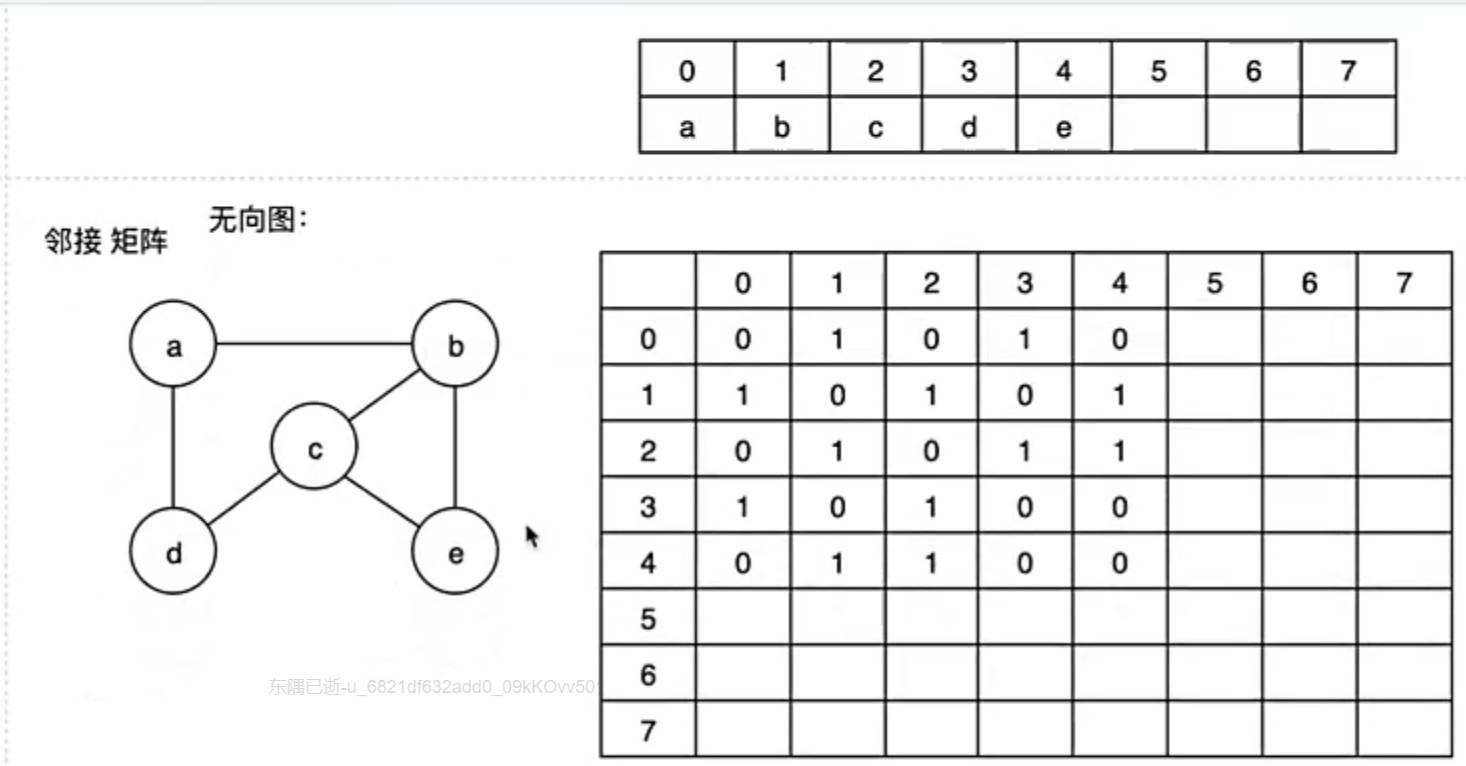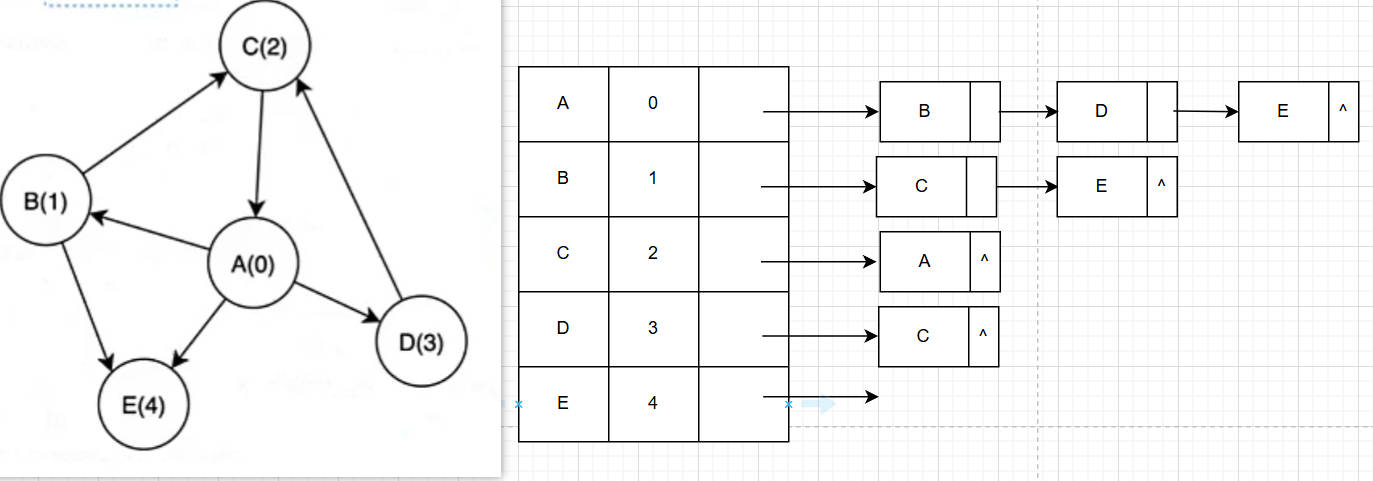图的表示法以及实现
一、图的表示
1.邻接矩阵
邻接指的是将所有元素用表相邻的连接起来,而矩阵是指用一个二维数组存储边的关系

2.邻接表
正常邻接表每个节点上记录出度链表的首地址,为了方便查找入度出现了逆邻接表,每个节点记录入度链表的首地址

3.十字链表
每个节点既要记录出度首地址,也要记录入度首地址
4.邻接多重表
当存储无向表时,会重复记录边的关系,邻接多重表就是为了解决这种情况出现的
5.边集数组
二,代码实现
1.邻接矩阵实现图
a.头文件
//
// Created by 27893 on 2025/7/20.
//#ifndef MATRIXGRAPH_H
#define MATRIXGRAPH_H#define MaxNodeNum 20//矩阵最大容量#define INF 1E5//顶点结构
typedef struct {int no;const char*show;
}MatrixVertex;
//边的结构
typedef int MatrixEdge;//邻接矩阵表示图结构
typedef struct {MatrixVertex vex[MaxNodeNum];MatrixEdge edges[MaxNodeNum][MaxNodeNum];int nodeNum;int edgeNum;int directed;
}MGraph;void initMGragh(MGraph*graph,const char*names[],int num,int directed,int edgeValue);void addMGraph(MGraph*graph,int x,int y,int w);
#endif //MATRIXGRAPH_H
b.将接口实现
//
// Created by 27893 on 2025/7/20.
//#include "MatrixGraph.h"
#include <stdio.h>
#include <string.h>;
static int isEdge(int weight) {if (weight>0&&weight<INF) {return 1;}return 0;
}void initMGragh(MGraph *graph, const char*names[], int num, int directed, int edgeValue) {graph->nodeNum=num;graph->directed=directed;graph->edgeNum=0;memset(graph->vex,0,sizeof(graph->vex));memset(graph->edges,0,sizeof(graph->edges));for (int i=0;i<num;++i) {graph->vex[i].no=i;graph->vex[i].show=names[i];for (int j=0;j<num;j++) {graph->edges[i][j]=edgeValue;}}
}void addMGraph(MGraph*graph,int x,int y,int w) {//判断传入的x,y是否合法if (x<0||x>graph->nodeNum) {return;}if (y<0||y>graph->nodeNum) {return;}if (!isEdge(graph->edges[x][y])) {graph->edges[x][y]=w;if (graph->directed==0) {graph->edges[y][x]=w;}graph->edgeNum++;}
}
